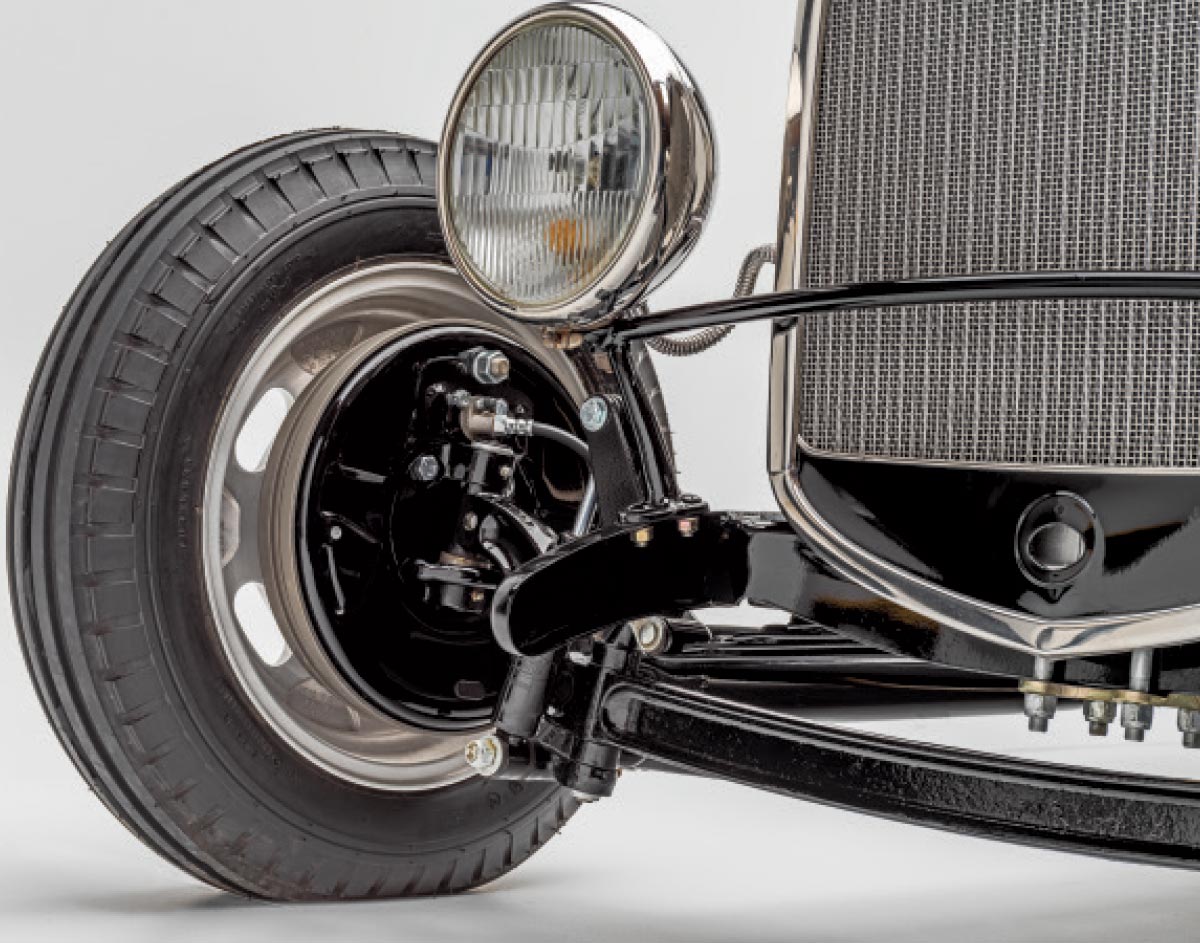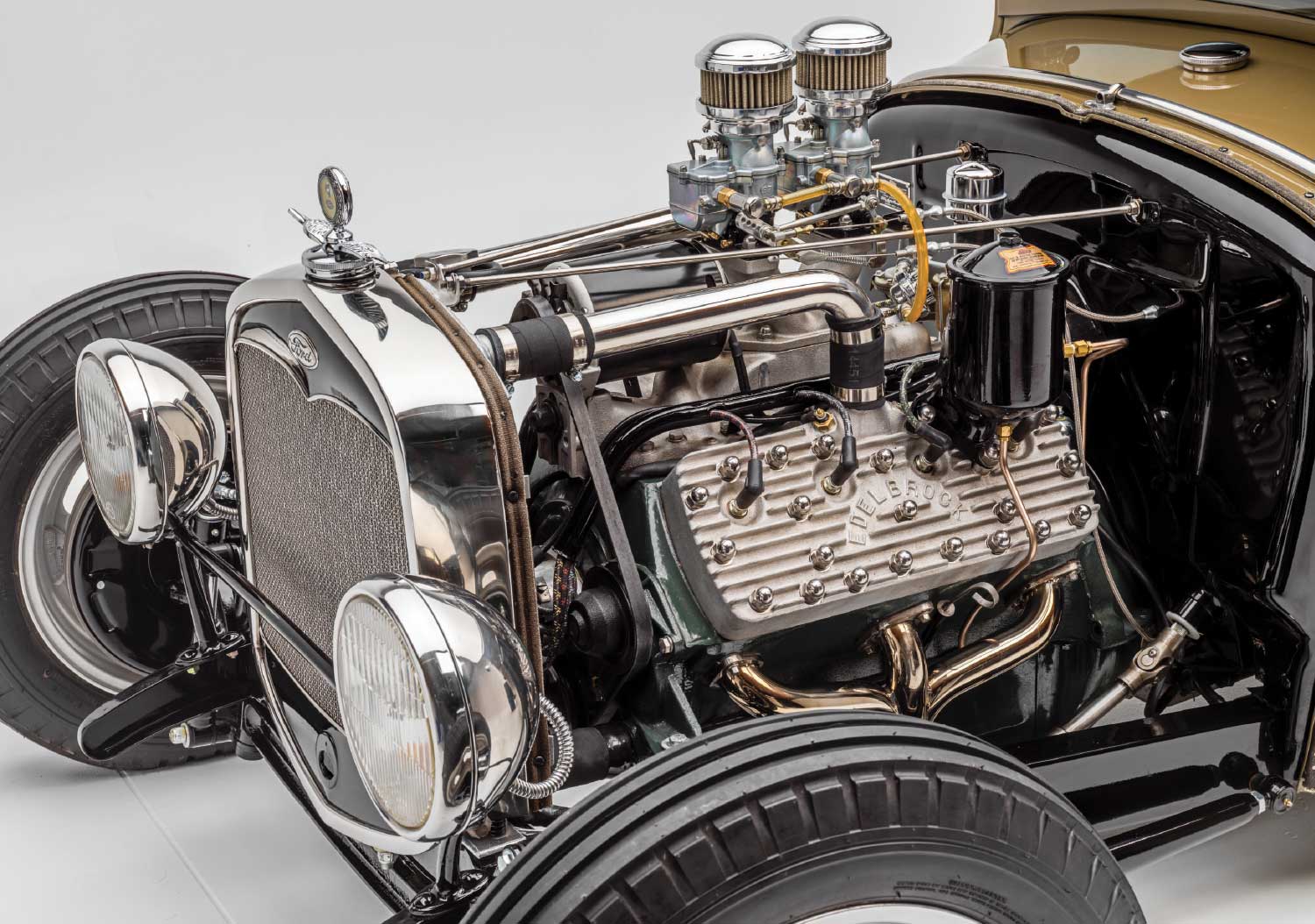
 Photography by Don Kates
Photography by Don Kateshe consensus is: Know what you want to build before starting. It will save you time, effort, and a great deal of money! Tim Garner of Wyoming was looking for a Deuce for his dad when he stumbled across this ’31 Ford Tudor sedan online. It was a stocker at the time and the intent of the original owner was to build a restoration. Tim had other plans. Before rolling it off the trailer Tim was ready to begin the 5-inch top chop. It was then just a matter of time before this ’31 Ford sedan was turned into a chopped-and-channeled hot rod.
It should be noted that the Model A Tudor sedan was in such great shape that all the sheetmetal, grille shell, and headlights are original. Being a bodyman and painter by trade Tim knows a great deal of what it takes to chop and channel any hot rod. Beginning with a ’31 Ford Tudor sedan body, Tim now removed 5 inches from the top and, in turn, channeled it 4 inches. The channeling took place over a Boling Brothers 4-10 frame (4-inch drop in front and 10 inches in back) that’s designed for building a channeled car that’s to be low but functional. The frame is a “stretched” stock Model A wheelbase going from 103 to 107 inches.

Dropped between the ’rails is a ’40 Ford Flathead that’s bored 0.030 inch where the machine work and assembly was handled by Vince Fankhauser of Wyoming Performance. Inside you will now find forged aluminum pistons, Scat crank and rods, and an Isky 400 Jr. cam. Visible are the Edelbrock heads, held in place by ARP studs, and the dual carb Slingshot-style intake that’s topped with a pair of Stromberg 97 carbs, operated by a Lokar throttle cable, covered with a pair of OTB air cleaners. The exhaust is based on Speedway Motors stainless steel headers that exit into 2-inch stainless steel tubes, which in turn run through a pair of Smithy mufflers. Firing the fuel load is a Stromberg e-Fire electronic distributor, 12V coil, and vintage-style cloth plug wires. Quick note: e-Fire comes in one of four front-mount distributors for Ford 59A Flathead engines; the 11A-style three-bolt (’32-41) and 21A-style two-bolt (’42-48) with 12V negative or 6V positive ground. (Editor’s note: On an e-Fire distributor cap, look closely at the bottom of a Stromberg distributor cap, in the 6 o’clock position, and you’ll see a small vent hole. Why? As a spark jumps the rotor to plug wire contacts a small amount of ozone is created inside the cap. Think humidity, such as in England or anywhere here in the U.S. near water. Ozone is conductive and corrosive by nature and can lead to misfires or rough idle. Or in a form of poetic justice in tech writer Ron Ceridono’s case, his Flathead stopped. The vent hole allows the ozone gas to escape, thereby solving the problem before it gets started. —B.B.)
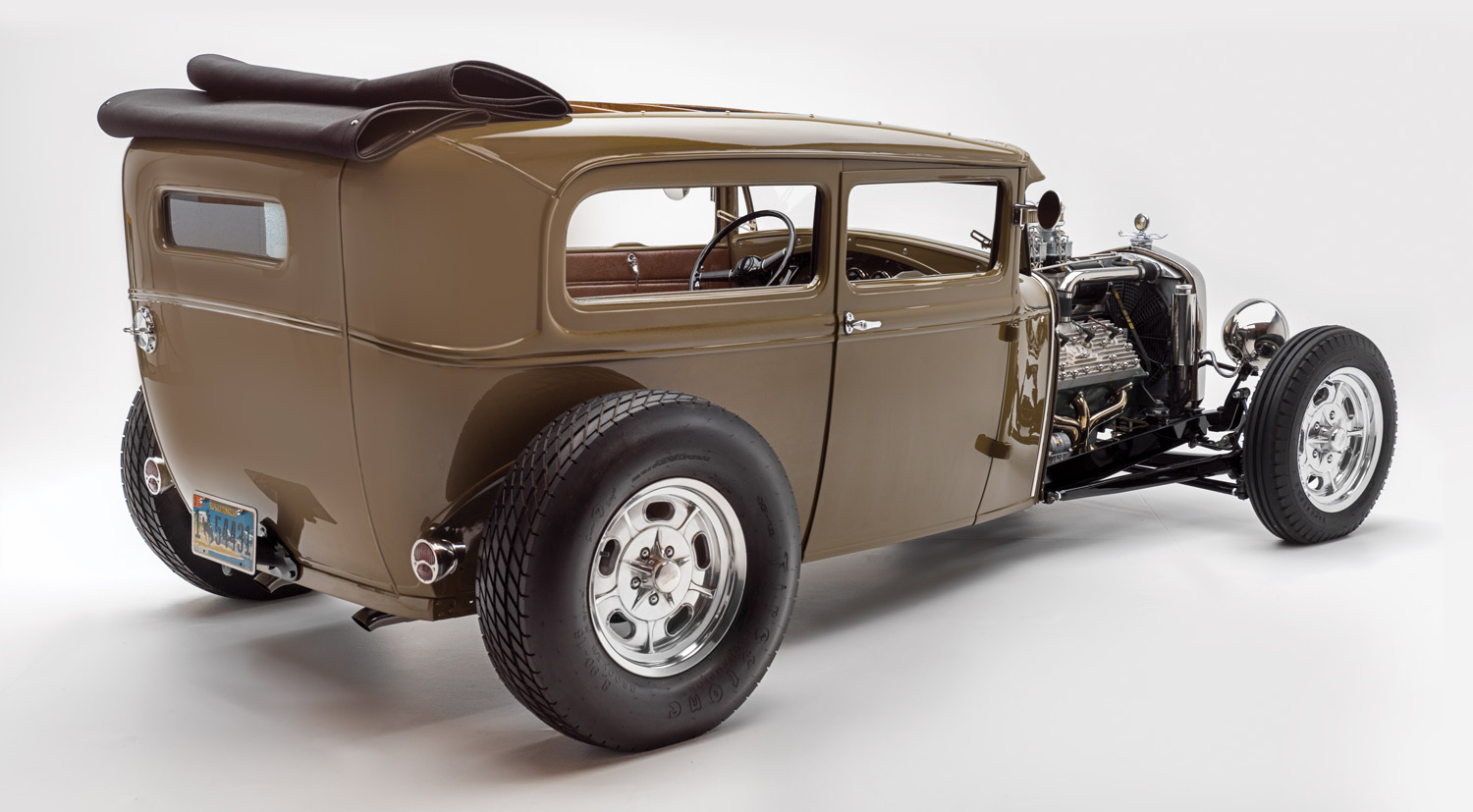
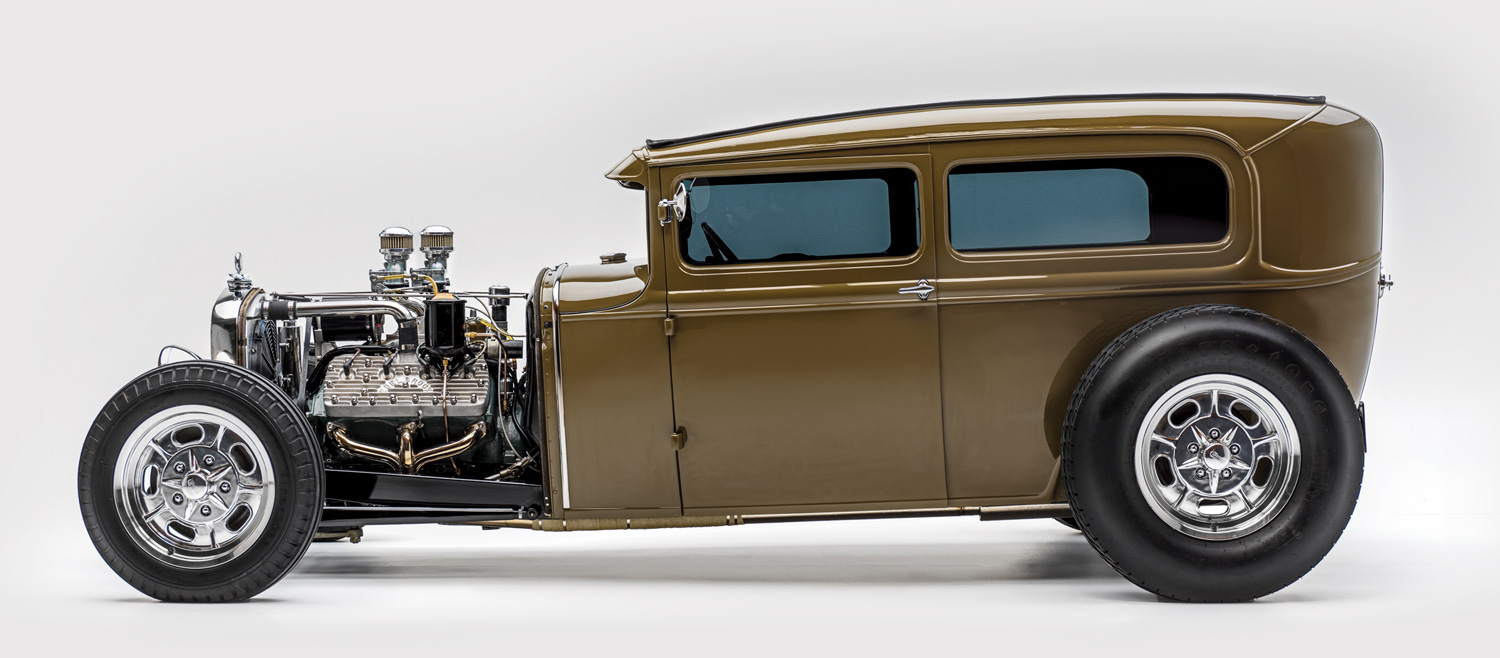
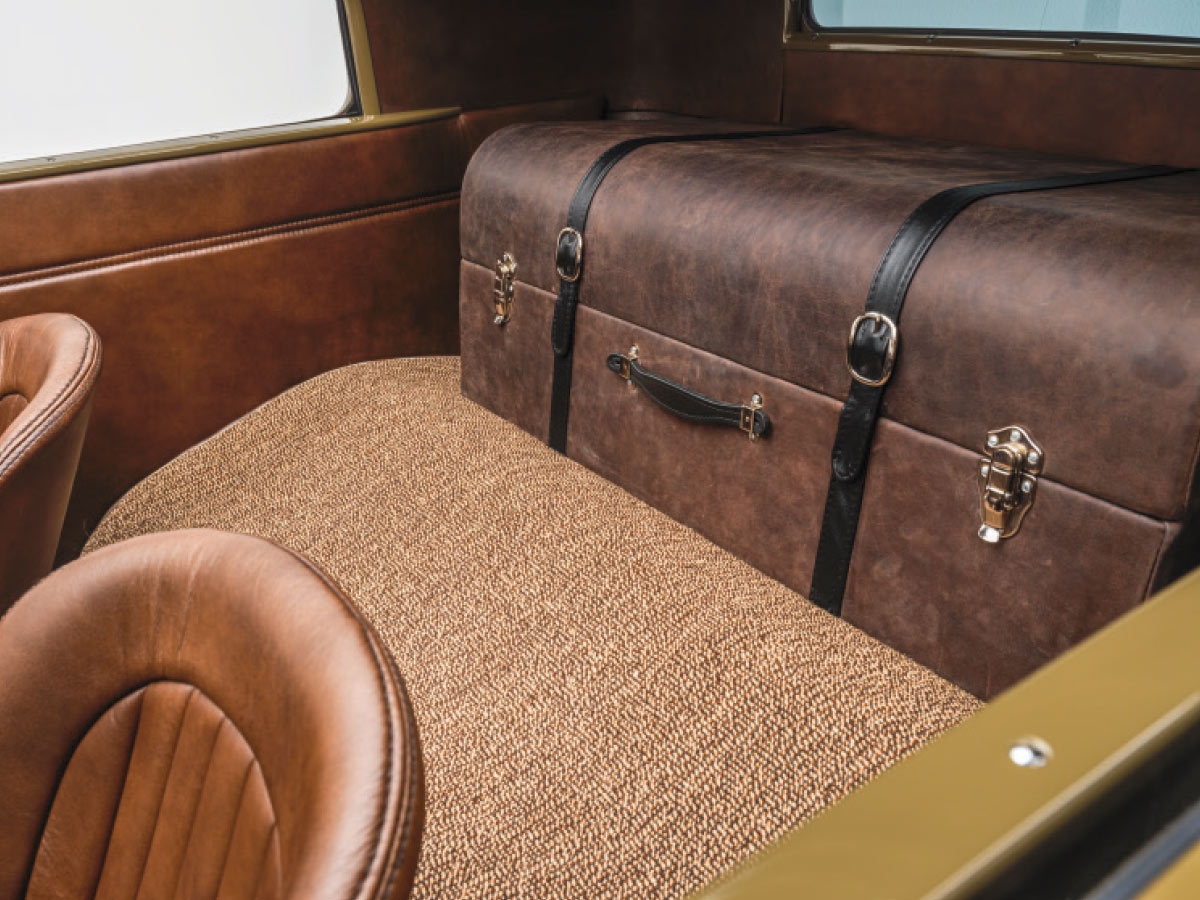
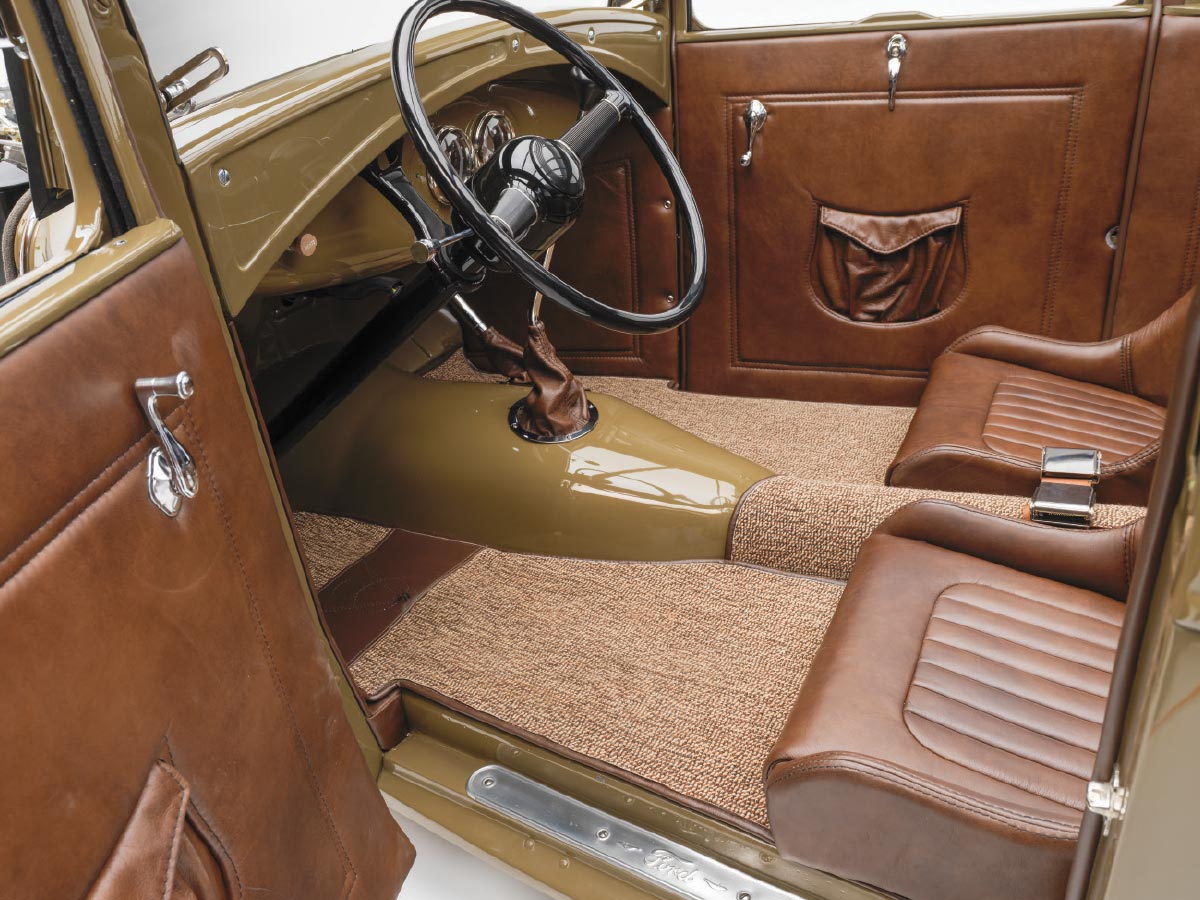

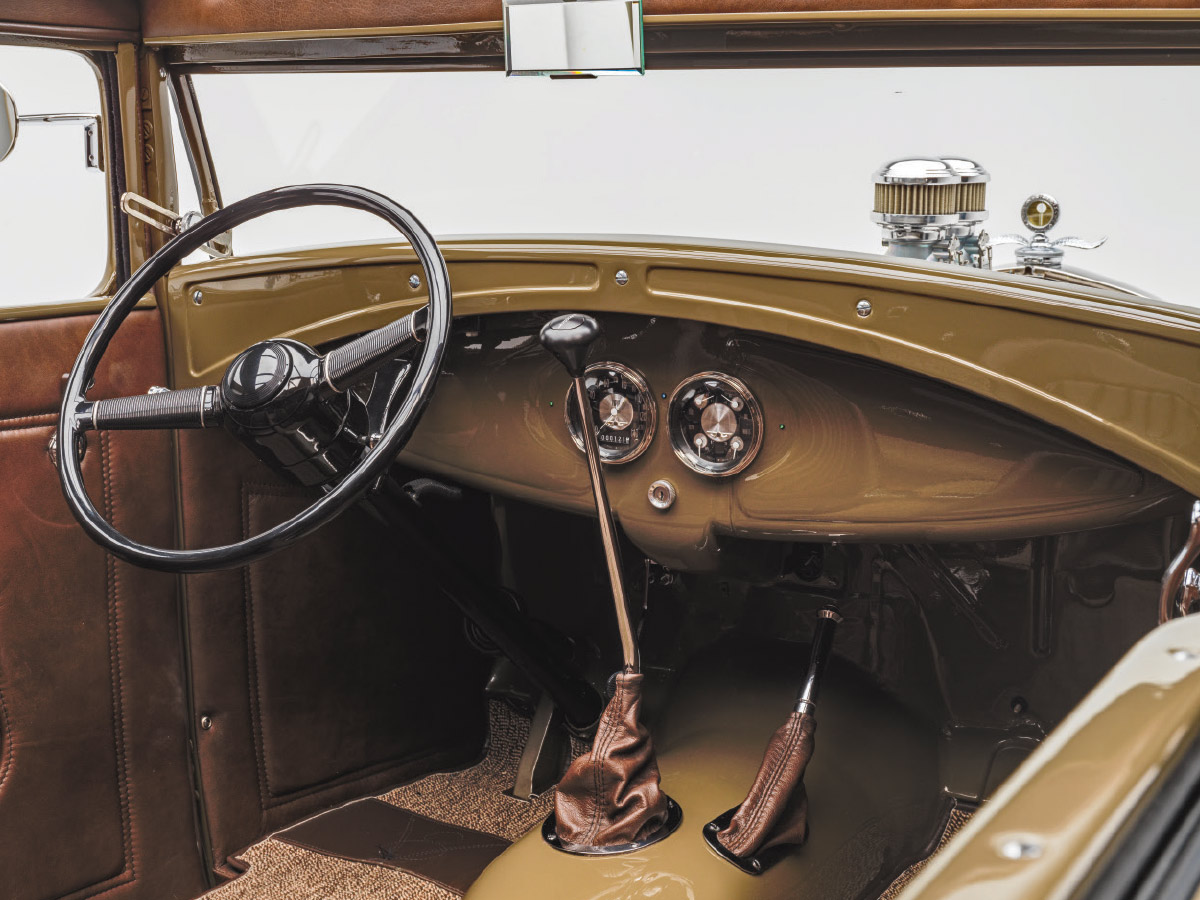
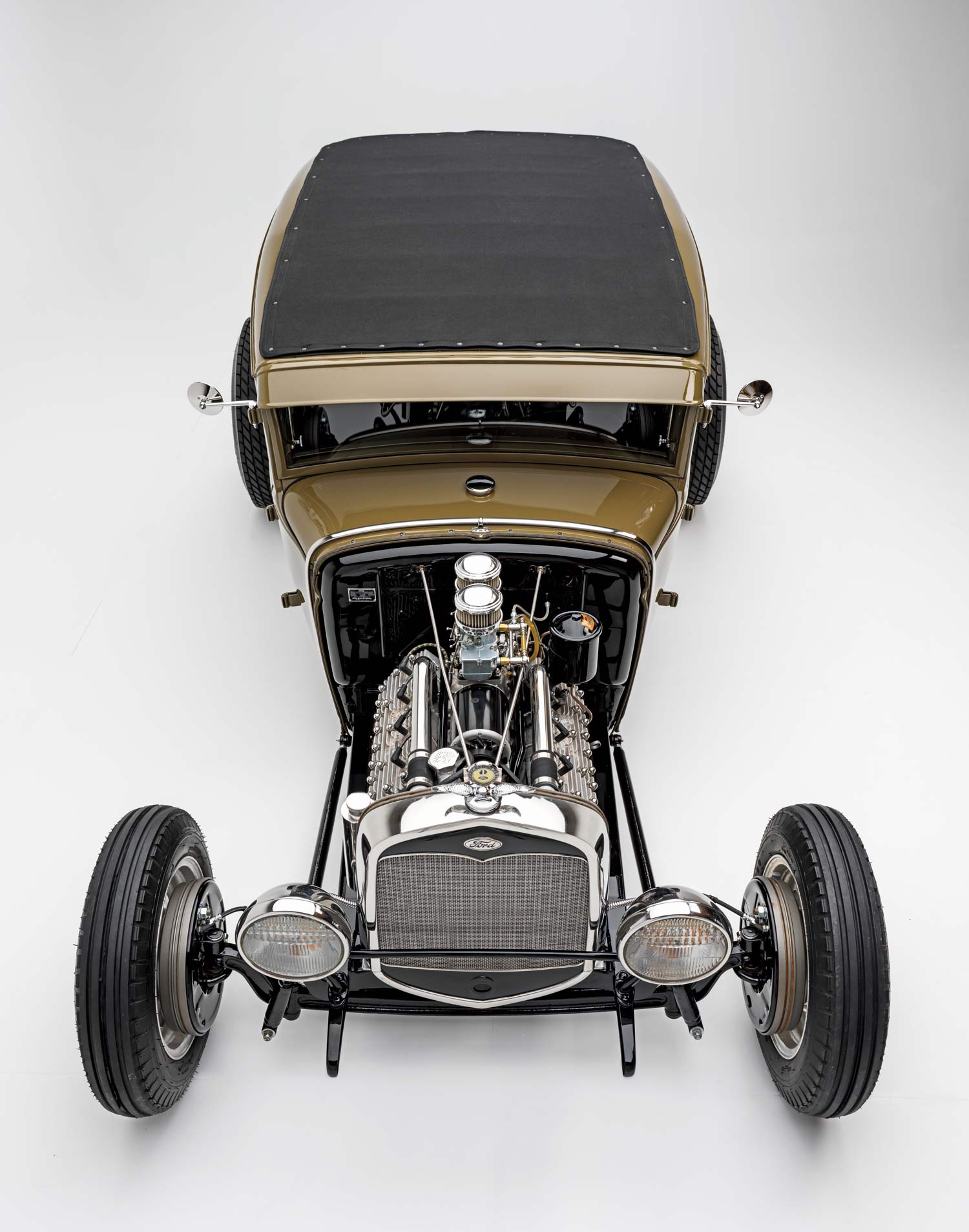
As mentioned earlier, the body began life as a ’31 Ford Tudor sedan that was chopped 5 and channeled 4 inches. The Tudor runs sans hood and fenders, while Tim handled the body- and paintwork. He used a custom mix of brown and green hue from Axalta to achieve the final color. An interesting touch is the roof. As we all know Model A roofs are made up of a wooden frame, chicken wire, and then material on the outside. Here, Tim redid the top after contacting Ford Wood to use original material and configuration and then stained and varnished it as it’s totally visible. From here modern convertible top material is used along with marine industry seals and then snaps shut. He tells us that it seals very well. Lighting is original—literally the headlights are from the day the sedan rolled off the assembly line. The taillights, while Model A, are doubled up—one per side.
Inside, the ’31 dash was mildly reworked to account for a center-mounted ignition key, diodes for turn signals and high beam, and a complement of Classic Instruments. The headlight switch is dash mounted to the far left. All the necessary wiring was handled by an American Autowire harness placed into position by Tim himself. The Flaming River steering column is twisted into action by a ’40 Ford wheel. Note the use of a Lokar shifter. Sam Parson stitched the pair of Speedway Motors bomber seats in a brown Relicate leather as are the kick and door panels, while the carpeting is a mocha square weave. Note the trans tunnel, while partially carpeted, is also metal finished and painted in body color.
Well, now that this project is wrapped up maybe Tim will have time to finish the ’61 Chevy Impala convertible he has promised Staci, his wife! A true hot rodder should always have multiple projects on tap.

